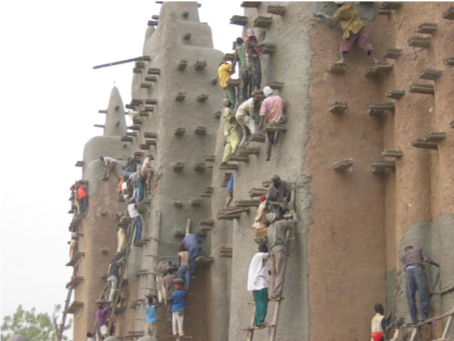
Global Conservation: Preservation, Reuse And Sustainability
Lectures (4)
Loading Accordion Items...The Overview
For most of history, reusing existing buildings has been, first and foremost, a matter of common sense and good economics, yet we can presume buildings held community or personal value, as well. Since buildings are the vessels that frame moments in human lives, it makes sense they would hold intangible forms of value for those who spend time in and around them. Historic and older buildings are the physical embodiment of our past, and their accumulation of age and patina is a process we relate to as human beings.
This course challenges students to critically understand the narrative of what happens to buildings after they’re built and how different cultures have adapted or preserved their buildings. Through a spatial and global lens, the course introduces preservation, conservation and reuse as a diverse, global, cultural construct. It investigates the concept of how and why buildings are preserved or reused through examining the idea of significance, memory, culture and materiality. It explores how the modernization of preservation and conservation, along with idea of a formal perception of value and significance, emerged from the codification of preservation in the 19th and 20th centuries. Finally, the course will introduce the concept of buildings as artifacts; objects not just to be valued for architectural significance, history, or memory, but as resources to be preserved and reused as containers of sustainability and resilience in the age of climate change.
The course will evaluate both early and contemporary developments in building conservation and reuse in the context of the greater global preservation movement and how it relates to a broader definition of sustainability. The course is not intended to be as an exhaustive nor chronological survey, but an investigation through a global lens of diverse thematic approaches based on the multiple complex narratives faced in each site. The course will conclude by revisiting concepts presented in the first lecture, critically assessing the value of heritage and authenticity and questioning how the contemporary nature of preservation projects contribute or detract from the work of conserving the tangible and intangible elements in our constructed world.
This course works well as either small discussion seminar (with written papers or longer essay assignments and quizzes) or as a large lecture course (with multiple choice, short answer and short-version evaluation-style questions). Presenting critical narratives of why we conserve sites of the past, how we choose who’s history to represent, how we represent difficult narratives, the consideration of alternatives to physical conservation and how sustainability emerged from traditional methodologies are just some of the themes that can be part of the larger narrative in each of the lectures.


